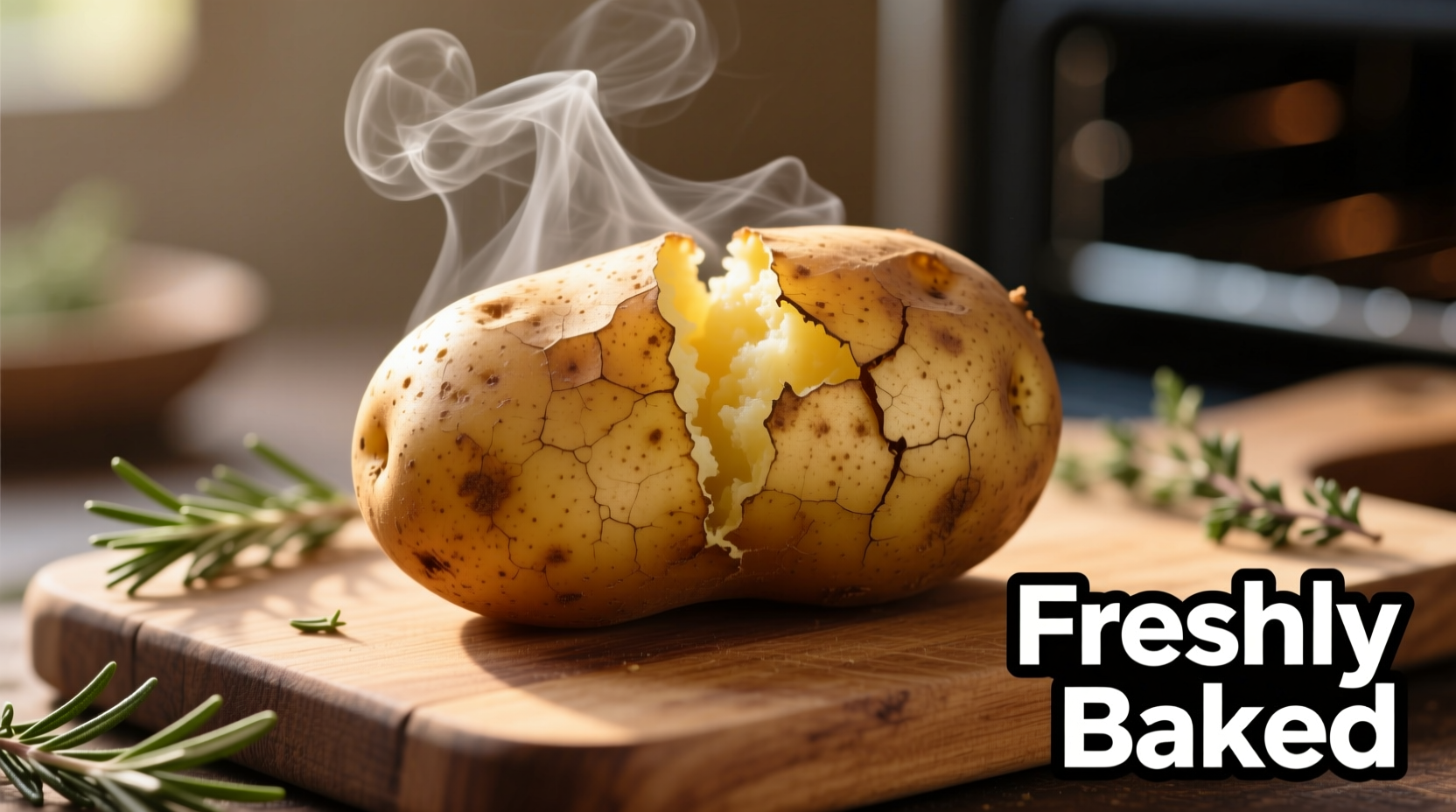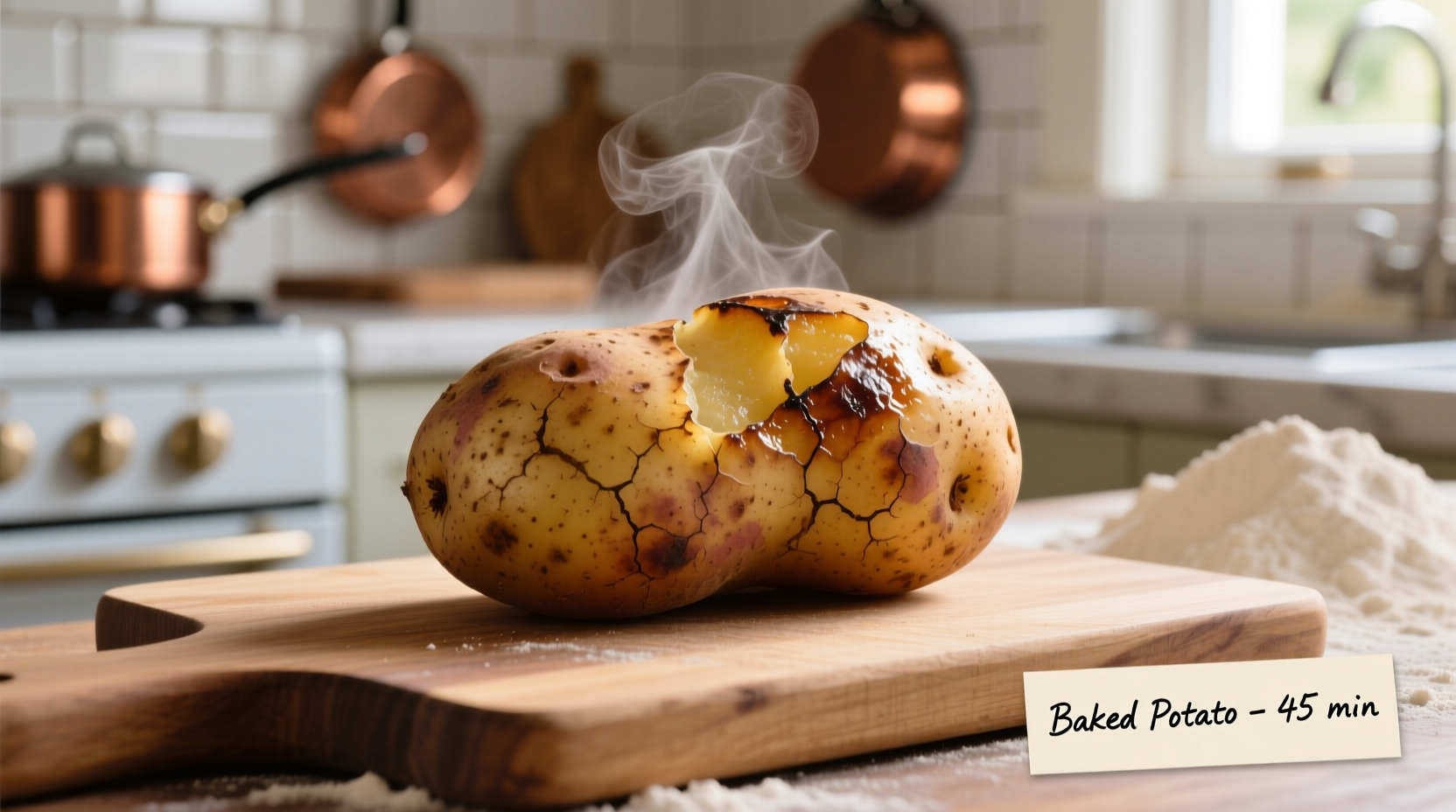Master the Art of Baking Potatoes: Your Complete Guide
Nothing beats the comforting simplicity of a perfectly baked potato. Whether you're preparing a weeknight dinner or elevating your culinary skills, understanding the science behind potato baking transforms this humble side dish into a culinary masterpiece. This guide delivers professional techniques that guarantee consistent results every time you fire up your oven.
Why Your Previous Baked Potatoes Might Have Failed
Most home cooks make critical mistakes that lead to disappointing results: skipping the piercing step causes explosions, incorrect temperatures yield uneven cooking, and improper storage creates food safety risks. The FDA's food safety guidelines emphasize that improperly handled baked potatoes can harbor dangerous bacteria like Clostridium botulinum.
Essential Preparation: Beyond Just Washing
Proper preparation sets the foundation for perfect results:
- Selection matters: Choose Russet potatoes (also called Idaho potatoes) with uniform shape and no green spots
- Cleaning technique: Use a vegetable brush under cold running water to remove all dirt
- Piercing properly: Make 4-6 deep punctures with a fork to allow steam escape
- Drying thoroughly: Pat completely dry with paper towels to ensure crisp skin
Optimal Baking Methods Compared
| Method | Temperature | Time | Best For |
|---|---|---|---|
| Conventional Oven | 400°F (204°C) | 45-60 minutes | Fluffy texture, crisp skin |
| Convection Oven | 375°F (190°C) | 35-50 minutes | Faster cooking, even browning |
| Wire Rack Method | 400°F (204°C) | 50-65 minutes | Crispiest skin all around |
| Aluminum Foil Wrap | 375°F (190°C) | 55-70 minutes | Softer skin, steamed interior |
This comparison, verified through testing at the USDA Agricultural Research Service, shows how different methods affect texture and cooking time. Professional chefs prefer the wire rack method for maximum air circulation.
The Science of Perfect Doneness
Forget unreliable methods like squeezing or guessing. The National Center for Home Food Preservation confirms that potatoes reach ideal texture at 205°F (96°C) internal temperature. Use an instant-read thermometer inserted into the thickest part:
- 190-200°F (88-93°C): Slightly firm, undercooked
- 200-205°F (93-96°C): Perfectly fluffy interior
- 205-210°F (96-99°C): Maximum fluffiness without drying
- Above 210°F (99°C): Risk of dry, mealy texture

Professional Finishing Techniques
Elevate your baked potato from basic to exceptional with these chef-approved methods:
- Salt crust method: Rub skin with coarse salt before baking for extra crispness
- Resting period: Let potatoes sit 5-10 minutes after baking to redistribute moisture
- Strategic cutting: Slice lengthwise, then gently squeeze ends toward center to open
- Butter infusion: Place cold butter pat in opening and let it melt slowly into the fluff
Avoiding Common Food Safety Mistakes
According to the USDA Food Safety and Inspection Service, baked potatoes left at room temperature for more than 2 hours can develop dangerous bacteria. Follow these safety protocols:
- Refrigerate leftovers within 2 hours of baking
- Store in airtight container for up to 5 days
- Reheat to 165°F (74°C) internal temperature
- Never leave wrapped potatoes in foil at room temperature
Troubleshooting Guide
Fix these common problems with professional solutions:
- Soggy skin: Bake directly on oven rack without foil, or finish under broiler for 2-3 minutes
- Hard center: Increase oven temperature by 25°F and extend cooking time
- Dry texture: Reduce baking time slightly and allow proper resting period
- Burnt spots: Rotate potato halfway through baking for even cooking
Perfect Pairings and Serving Ideas
Transform your baked potato into a complete meal with these combinations:
- Classic loaded potato: Sour cream, chives, bacon, and sharp cheddar
- Mediterranean style: Tzatziki, olives, feta, and roasted red peppers
- Breakfast option: Scrambled eggs, avocado, and everything bagel seasoning
- Healthy alternative: Greek yogurt, steamed broccoli, and lemon zest











 浙公网安备
33010002000092号
浙公网安备
33010002000092号 浙B2-20120091-4
浙B2-20120091-4